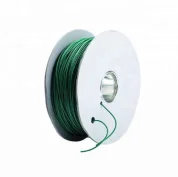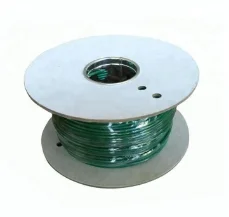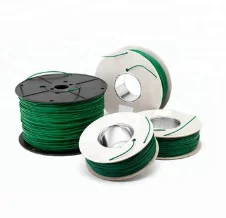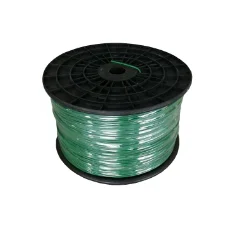2.7mmBoundary wire used for robot lawn mower
There are many different boundary cables you can use for robotic mowers. In addition to the varying boundary wires of different manufacturers, there are alternatives to choose from for some specific cases as well, like for yards that have rodents.Therefore I have compiled a complete overview of all these different kinds of boundary wires, and will provide you here with some guidance on deciding which one you might need.
Which boundary wire should you use for your robotic mower?
A robotic mower can generally use a boundary wire from any manufacturer. However, you should make sure that the cable is intended for a robotic mower with approximately the same area output as the mower, as the electrical resistance in the cable must not be too high for very large areas.

But there are also various types of boundary wire, such as cables with extra thick insulation to better protect them against adverse weather, or with special sheathing to protect them from rodents or damage from garden tools. There are also various cheaper alternatives. Here you can get a complete overview.
How Can Boundary Wires Differ?
Boundary cables for robotic mowers are composed of an outer protective layer, which can be made of various insulating materials, usually HDPE, and an inner wire, made of a metal with good conductive properties, usually copper.
Most standard boundary wires consist of this simple structure. This means an insulating jacket made of HDPE on the outside and a single-core copper cable on the inside.
Some cables, such as those from HUSQVARNA, do not use copper, but a special metal alloy to provide slightly better resistance.
Some alternatives to the traditional boundary wire can also be made of different materials, both for the conductor cable and the insulating layer.
There are also differences in the diameter of the cable and the number of wires. Some cables consist of several wires twisted together. A larger cable diameter provides less resistance. This is important for very large areas or very long boundary cables, so that the signal can reach the end of the cable.
Then there are special safety cables that are protected against damage of various kinds, e.g. from shovels or rodents. These cables have a tinned copper braid around the insulating sheath, which in turn is enclosed by another protective sheath.
Due to these differences, boundary cables for robotic mowers also differ in their diameter, due to the number and thickness of the layers, and in their flexibility, due to the thickness and the material used.
So here is a list of the different attributes that distinguish boundary wires:
- Material of the insulating layer (often HDPE, the same for all manufacturers, not necessarily for alternative cables)
- Material of the electrical conductor (copper, aluminium, steel, various alloys), resulting in differences in electrical resistance
- Thickness of the electrical conductor, resulting in differences in electrical resistance.
- Single core or twisting
- Additional protective layers
- Flexibility, due to thickness and material
- Thickness of the entire cable
Which Boundary Wires We Can Offer You?
| Type | Specification | Conductor | Insulation | Picture | Packing |
| Original | 2.45mm | TCCA/TC | HDPE |  | 50/100/250/300/500/800M On Plastic/Paper Reel |
| Normal | 2.7mm | TCCA/TC | HDPE |  | 50/100/250/300/500/800M On Plastic/Paper Reel |
| Strong | 3.4mm | TC | HDPE |  | 50/100/250/300/500/800M On Plastic/Paper Reel |
| Strong+ | 3.8mm | TC | HDPE |  | 50/100/250/300/500/800M On Plastic/Paper Reel |
| Metal Mesh | 3.8mm/4.2mm | TC | HDPE | 50/100/250/300/500/800M On Plastic/Paper Reel |
